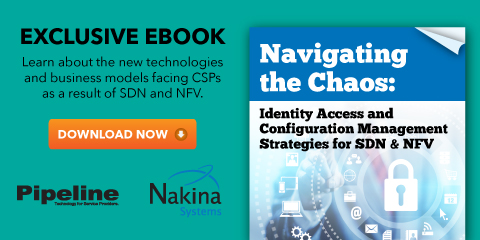Unified Performance & Fault Management
Together, automating these two processes seeks to reduce the lead time from a service order to service activation from weeks to months to seconds or minutes. Similarly, the operator would like to replenish its resource inventory rapidly to lease them as new services as quickly as possible.
While the network is actively delivering a service, service assurance proactively monitors the performance and availability of the service, assuring compliance with SLAs. Service assurance includes performance management and fault management functions that provide real-time visibility into network behavior and events to network operators and service customers.
Hopefully, this simple perspective illustrates the extensive scope of functional automation required to implement service orchestration. Though it would be nice to flip a switch and get a “big bang” solution, service orchestration will take significant system integration effort and time. Rather than wait for all three orchestration areas to be implemented, many operators are looking to stage their implementation and deployment.
A staged or phased implementation makes the learning curve more manageable. Keeping a unified vision in mind, focusing projects on pieces of the broader solution allows the CSP to realize intermediate benefits. A well-planned, staged project can offer continuous improvement of operational efficiency and the customer experience.
Start with the Tests
A one-size-fits-all phased implementation strategy probably does not exist. However, there seems to be a trend among service providers to modernize their service assurance applications as the first step toward service orchestration. This strategy parallels the common software design principle of “write the tests first,” where before coding a functional module, the software engineer writes his tests — helping to fully define the requirements with executable code. Service assurance applications are in-service test suites for network services, and it helps to have them in place first.
At some point in the project, a new service fulfillment application will create dynamic services, hopefully with dramatically improved efficiency and lead time. A service assurance application is a necessary correctness test to validate the proper provisioning of the service itself and prevention of negatively impacting other services. Therefore, the service assurance application must be ready to accept the higher workloads generated by automated provisioning.
In the meantime, the new service assurance application will reduce the operational costs of monitoring existing network services. These services will need to co-exist with the new dynamic services, likely well beyond the full implementation of service orchestration. Instrumentation of the new service assurance application with intuitive visualization and reporting tools will help NOC engineers and improve the customer experience with real-time, high-fidelity visibility into their service performance.
Integrating the new application with an existing network will help ensure the system scales to the size of the network and handles the idiosyncrasies of existing, multi-vendor, end-to-end infrastructure. The service assurance application should accurately track existing key performance indicators (KPIs) and allow the definition of new KPIs tailored to new, dynamic services such as order fulfillment throughput, latency and dropout.





















